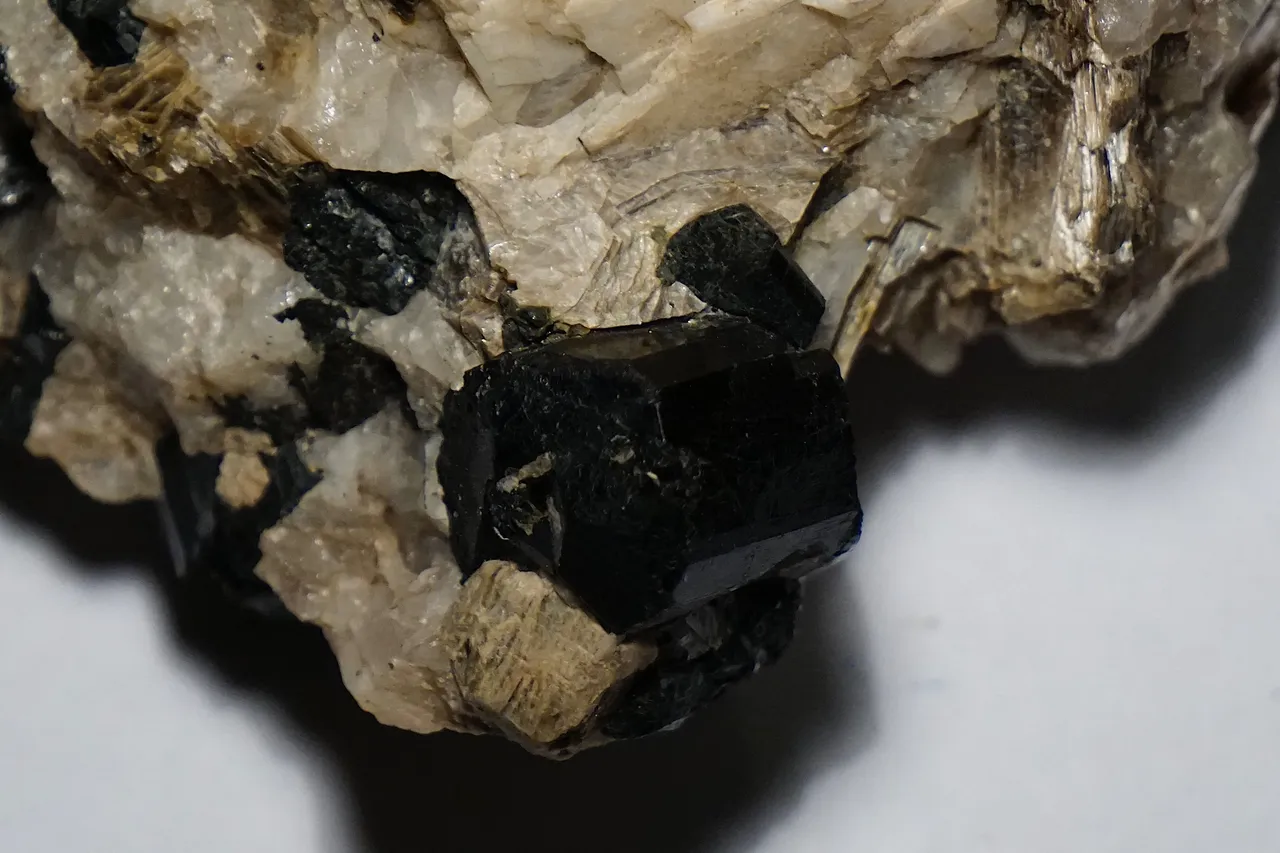Hey dear Hive Community, first of all I would like to welcome you all to my new post and hope you are all well and your day was full of positive experiences! In this post, I would like to address an interesting topic related to minerals and hope you can learn something new.

My pictures show the mineral Schorl, which is also known as black tourmaline, but today it is not about this mineral but an interesting property which minerals of the tourmaline group have in common. The word pyroelectricity is originally derived from the Greek of the word pyro for fire and it refers to the effect of producing electrically through the influence of temperature. Pyroelectric minerals are crystals with electrical polarization and if you heat or cool them, the surfaces charge electrically and at one end they are positively charged and at the other they are negatively charged. Theoretically, you could absorb the generated energy with electrodes that touch the surface and the effect of the generated charge depends on the structure of the crystal. This type of mineral already naturally contains large electric fields and the change of temperature changes the positions of the atoms within the crystal structure so that the polarization is created and if the temperature that created the pyroelectric effect remains the same, it disappears and spontaneous polarization can be attributed to a sudden change in temperature.

For the first time, this effect was found in tourmaline, but there are also other minerals that have this property and this effect has been known for a long time and probably this effect was already known in ancient times, but was scientifically explained later. This effect could also be detected with minerals such as quartz, londonite or barium titanate and with this type of crystals, high voltages can also be generated in a very small space and it is definitely an interesting topic to be able to generate electrical voltages with the help of minerals. Pyroelectricity is also often used from an industrial point of view and so it is often used in different sensors such as infrared or temperature sensors and I find it incredible how diverse the area of application of some minerals is. If you are also interested in the mineral Schorl in general, you will find here a contribution from me in which I have already gone into more detail.

Many thanks for stopping by and I hope you like my new contribution! I captured these pictures with my Camera Sony Alpha 6000 plus 55-210 mm lens!